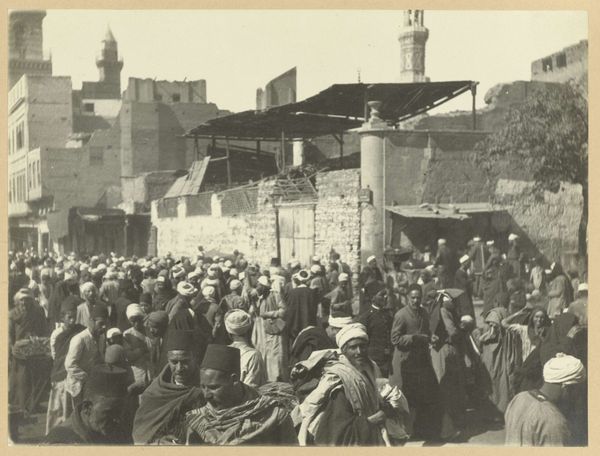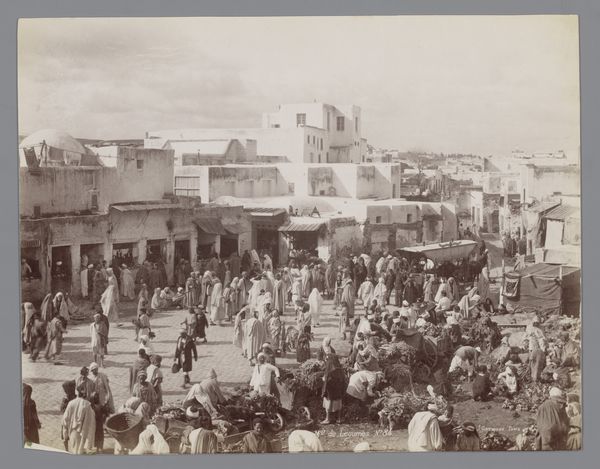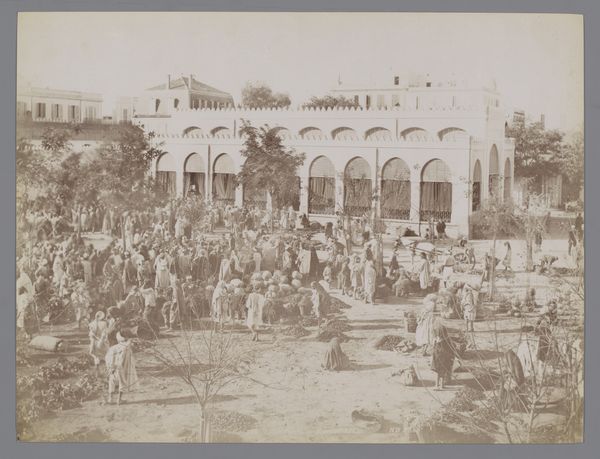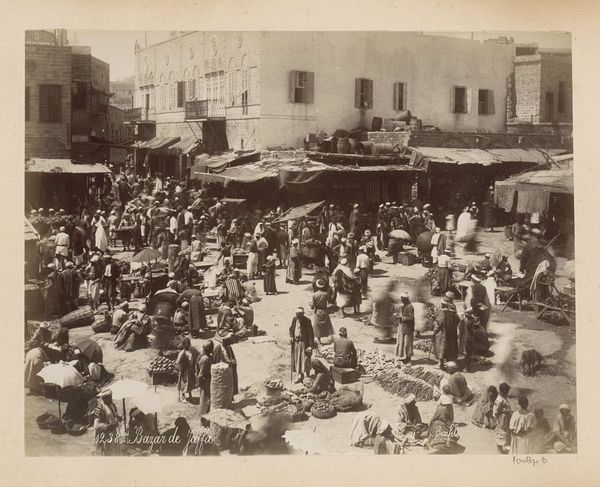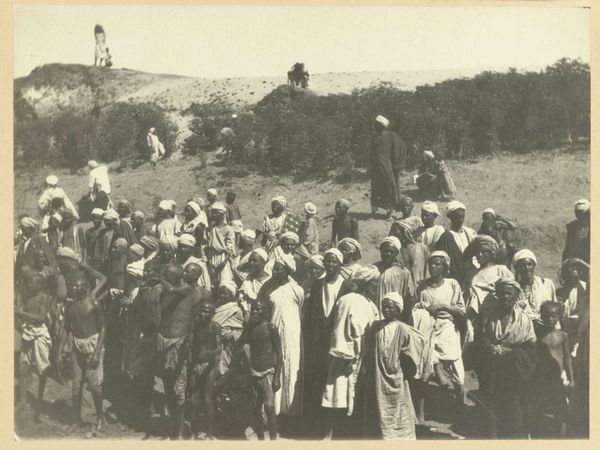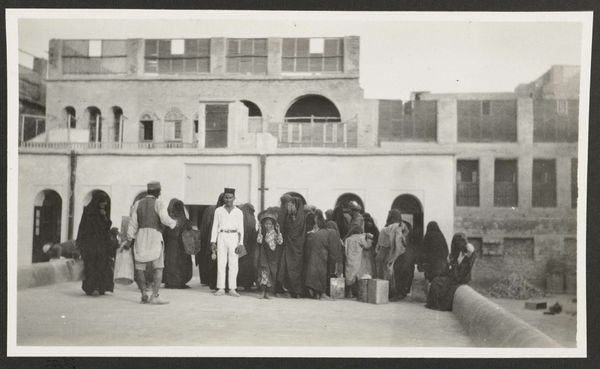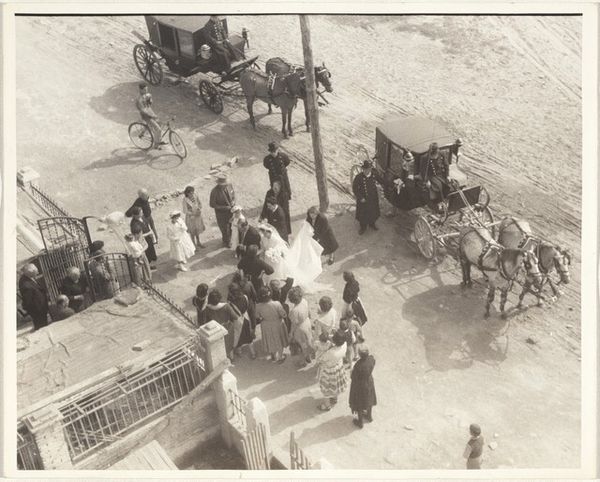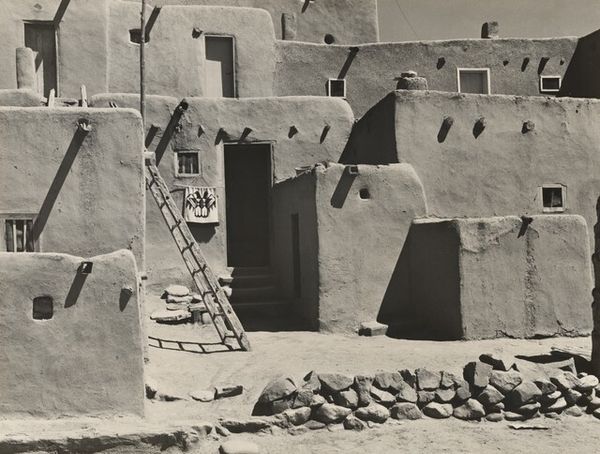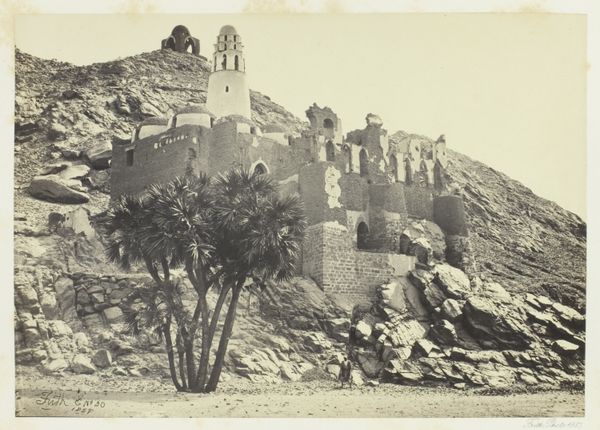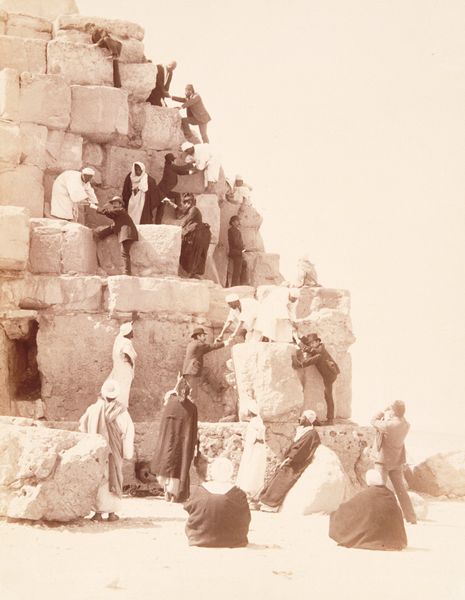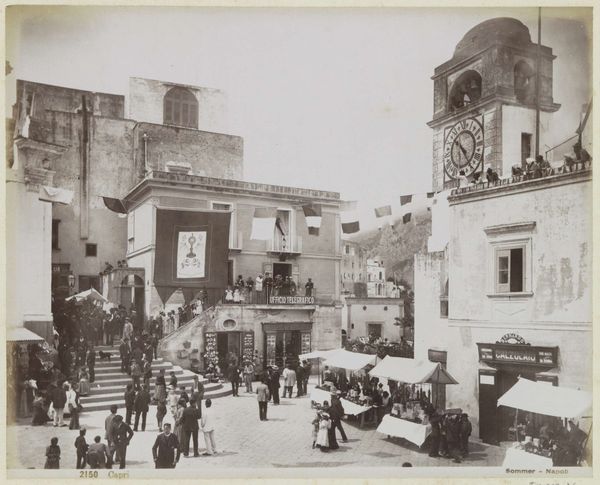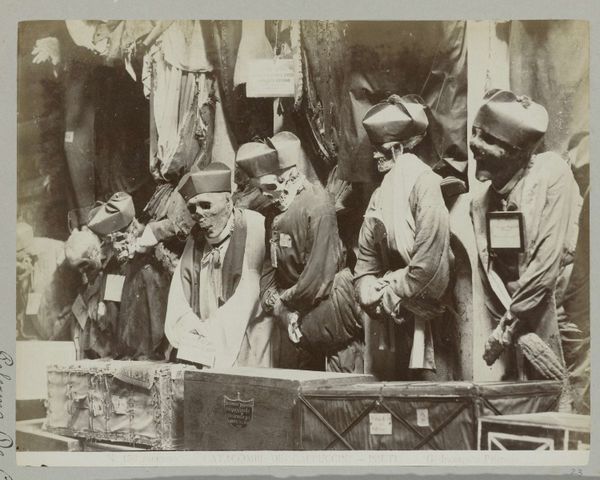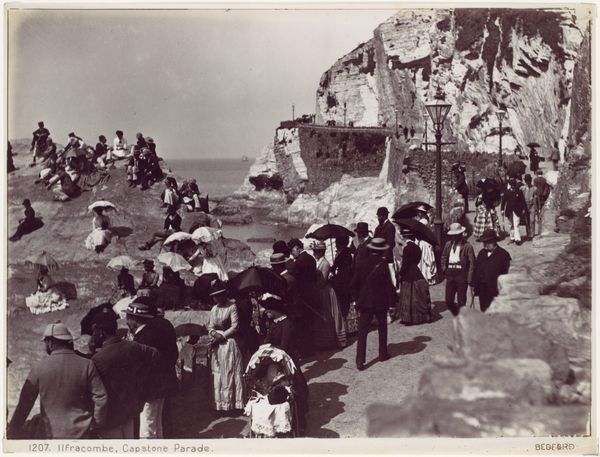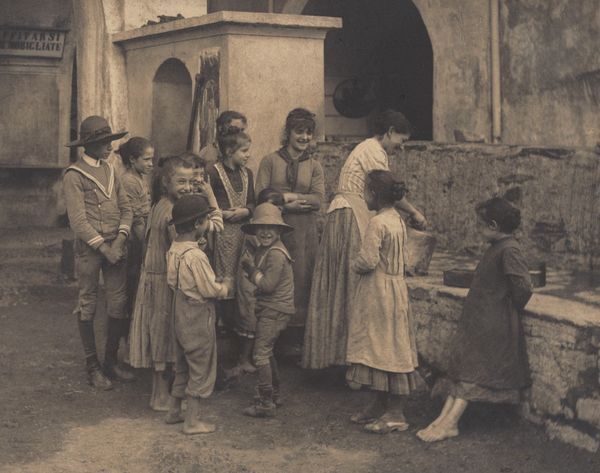
photography, gelatin-silver-print
#
black and white photography
#
landscape
#
black and white format
#
street-photography
#
photography
#
black and white
#
gelatin-silver-print
#
monochrome photography
#
islamic-art
#
monochrome
#
realism
#
monochrome
Dimensions: overall: 16.8 x 24 cm (6 5/8 x 9 7/16 in.)
Copyright: National Gallery of Art: CC0 1.0
Curator: This gelatin silver print, titled "The Market, Aswan, Egypt," was captured by Paul Strand in 1959. Editor: My initial impression is a feeling of organized chaos. The composition, viewed from slightly above, presents a tightly packed scene, primarily in tones of grey and cream. It feels incredibly dense, like you could almost hear the murmur of the crowd. Curator: It’s interesting that you use the word "organized." I see it too—this photograph manages to encapsulate a cultural crossroads. Markets like this, traditionally gathering points for commerce and connection, are enduring symbols of communal life. The light in this picture almost sanctifies the everyday. Editor: From a formal perspective, the image balances overall texture with strong geometric forms. Consider the cylindrical forms, the flat rooftops, then your eyes are driven again across all the smaller textural details within. The buildings themselves are cubic forms against a central circular building—perhaps a religious or civic space? The high contrast also creates a dynamism that propels your gaze through it. Curator: Yes, and look how Strand utilizes those figures to build the image’s layers. Those darker-clothed figures moving around give it such movement—while those clad in lighter fabric seem to be waiting, selling, maybe just existing in the margins. It resonates on a cultural memory level, and even psychological. The dichotomy, as it exists across so many civilizations, feels ancient and vital. Editor: What I find fascinating about Strand's method in this image, it the absence of traditional depth-creating strategies. This gives the image the feeling of an intimate surface while also offering an expansive portrayal. The use of monotone in combination with sharp details contributes to a timeless effect. Curator: Indeed, and it brings forth questions on cultural resilience, a subtle resistance to imposed norms or a simple statement about continuity. Seeing that simple architectural curve next to people practicing daily habits—there is an essence that carries through time. Editor: In summation, a closer look unveils a tightly crafted and wonderfully dynamic composition from Paul Strand. Curator: Yes, capturing a moment of cultural expression frozen in time.
Comments
No comments
Be the first to comment and join the conversation on the ultimate creative platform.
